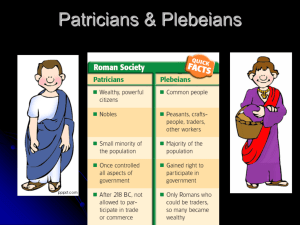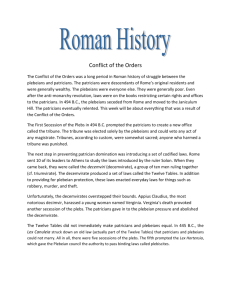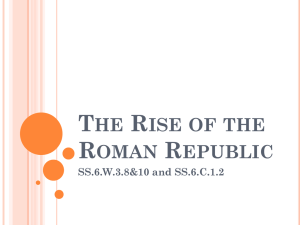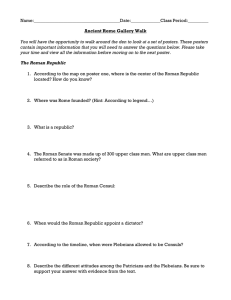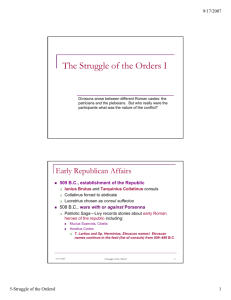Patricians vs. Plebeians: Ancient Rome Social Classes
advertisement
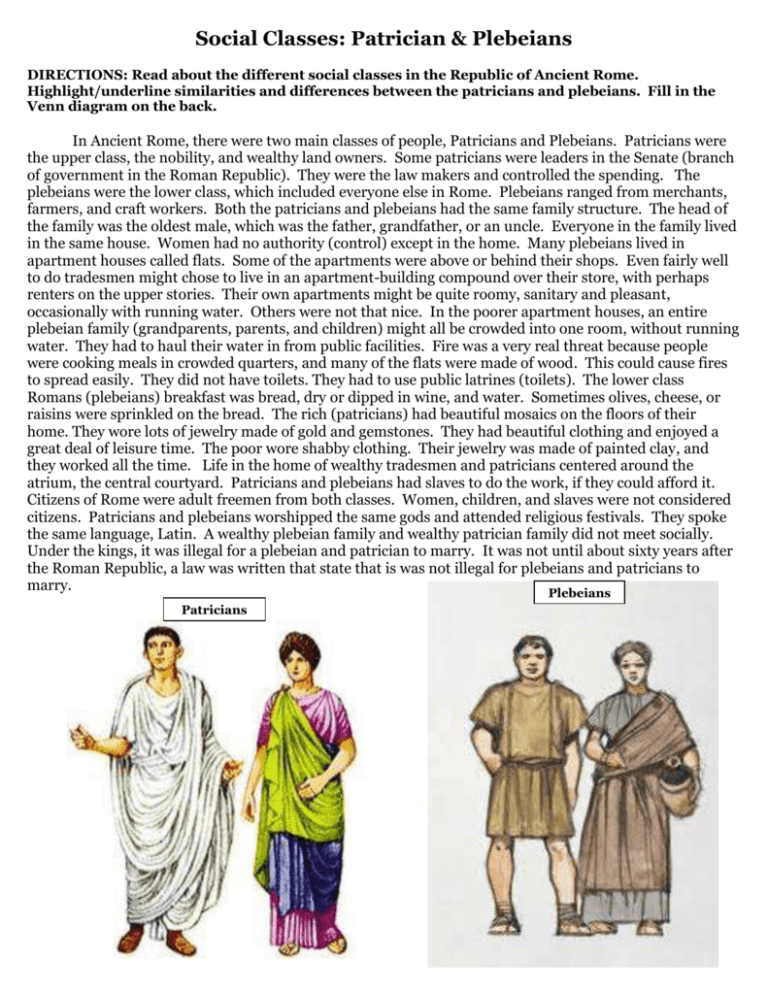
Social Classes: Patrician & Plebeians DIRECTIONS: Read about the different social classes in the Republic of Ancient Rome. Highlight/underline similarities and differences between the patricians and plebeians. Fill in the Venn diagram on the back. In Ancient Rome, there were two main classes of people, Patricians and Plebeians. Patricians were the upper class, the nobility, and wealthy land owners. Some patricians were leaders in the Senate (branch of government in the Roman Republic). They were the law makers and controlled the spending. The plebeians were the lower class, which included everyone else in Rome. Plebeians ranged from merchants, farmers, and craft workers. Both the patricians and plebeians had the same family structure. The head of the family was the oldest male, which was the father, grandfather, or an uncle. Everyone in the family lived in the same house. Women had no authority (control) except in the home. Many plebeians lived in apartment houses called flats. Some of the apartments were above or behind their shops. Even fairly well to do tradesmen might chose to live in an apartment-building compound over their store, with perhaps renters on the upper stories. Their own apartments might be quite roomy, sanitary and pleasant, occasionally with running water. Others were not that nice. In the poorer apartment houses, an entire plebeian family (grandparents, parents, and children) might all be crowded into one room, without running water. They had to haul their water in from public facilities. Fire was a very real threat because people were cooking meals in crowded quarters, and many of the flats were made of wood. This could cause fires to spread easily. They did not have toilets. They had to use public latrines (toilets). The lower class Romans (plebeians) breakfast was bread, dry or dipped in wine, and water. Sometimes olives, cheese, or raisins were sprinkled on the bread. The rich (patricians) had beautiful mosaics on the floors of their home. They wore lots of jewelry made of gold and gemstones. They had beautiful clothing and enjoyed a great deal of leisure time. The poor wore shabby clothing. Their jewelry was made of painted clay, and they worked all the time. Life in the home of wealthy tradesmen and patricians centered around the atrium, the central courtyard. Patricians and plebeians had slaves to do the work, if they could afford it. Citizens of Rome were adult freemen from both classes. Women, children, and slaves were not considered citizens. Patricians and plebeians worshipped the same gods and attended religious festivals. They spoke the same language, Latin. A wealthy plebeian family and wealthy patrician family did not meet socially. Under the kings, it was illegal for a plebeian and patrician to marry. It was not until about sixty years after the Roman Republic, a law was written that state that is was not illegal for plebeians and patricians to marry. Plebeians Patricians
